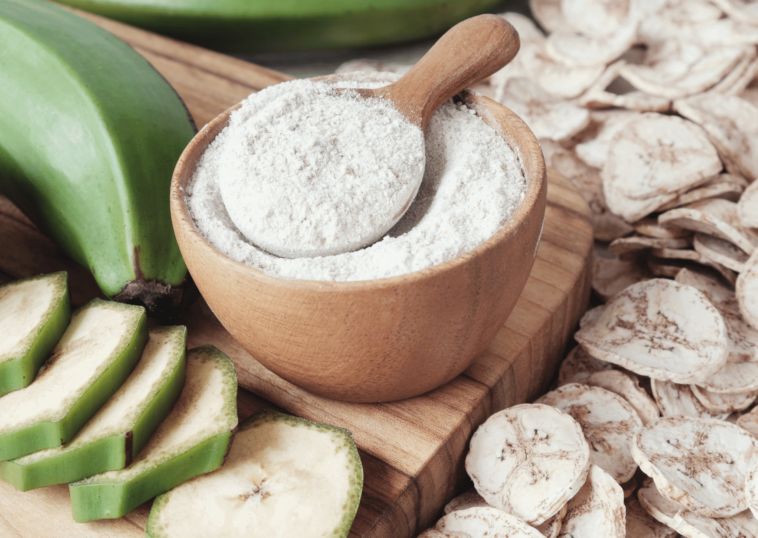The carbohydrates within starches do not have a very good reputation as far as weight loss. However, we must always remember that not all hydrates are the same but some, far from gaining weight, can favor our plan of losing weight. This is the case with resistant starch .
Resistant starch also associated with several health benefits. For example, increased sensitivity to insulin, reduced appetite, and improved brain and immune systems.
Read on to find out what resistant starch is, what it is for, and how to add it to your diet.
What is resistant starch?
Starch is a type of carbohydrate found in grains, vegetables, and a large number of foods.
Most types of starch are digested. That is, they are broken down into glucose in the small intestine, which is then used for energy.
When there is an excess of glucose it is transformed into triglycerides or body fat. That is why starch is said to be fattening.
Resistant starch is a type of starch that is not completely digested by our body, so it acts in a similar way to fiber, feeding intestinal bacteria and also slowing down the digestive process.
Once consumed, resistant starch demands a great digestive work from our body and feeds the intestinal bacteria promoting evacuation as well as the proliferation of the colon flora that benefits the organism.
Given these characteristics, this type of starch can promote the consumption of calories in our body by requiring greater metabolic work but also, it is not fully absorbed , therefore, the calories that our body acquires with its consumption are lower than those we can obtain of a refined hydrate or an easily digestible starch.
How does it work?
Resistant starch works as a fermentable soluble fiber. It passes through the stomach and small intestine without being digested.
As the fibers ferment, they act as prebiotics and feed the good bacteria in the gut.
When good bacteria ferment, the production of short chain fatty acids like butyrate increases. Butyrate is the preferred fuel for the cells that line your colon. (3)
This could not only have benefits for the health of the colon, but also improve the health of the brain and its defenses.
RELATED: Carbohydrates – What are they?

What is resistant starch good for? – Benefits
Many studies show that resistant starch can have powerful health benefits. (1,3,4,5)
Resistant starch is used to lower blood sugar levels after meals. This helps improve insulin resistance.
By improving insulin sensitivity and lowering blood sugar, resistant starch can help you avoid chronic diseases like diabetes, obesity, and heart disease.
Resistant starch lowers the pH level, which has positive effects on inflammation and leads to changes that can reduce your risk of colon cancer.
Also, resistant starch has an effect on appetite. Because it is not digested but mechanically fills the stomach, it allows a person to reduce food cravings. This can help you reach a healthy weight.
In animal studies, resistant starch has also been shown to increase mineral absorption. (5)
Although there is no formal recommendation for resistant starch intake, many of the studies that have proven its health benefits use an amount of 15 to 30 grams per day. (2.3)
The benefits of resistant starch are:
- Lower blood sugar levels
- Improve insulin sensitivity
- Can help control weight
- Lower risk of colon cancer
- Reduce inflammation
- Increase mineral absorption

Foods with resistant starch
Foods that contain resistant starch are most whole grains, legumes, and bananas.
Interestingly, the way you prepare foods that contain resistant starch affects its content. The temperature already destroys them.
However, you can “reclaim” the resistant starch content of some foods by allowing them to cool after cooking.
Foods that contain resistant starch:
- Bananas and green bananas (as a banana ripens, the resistant starch changes to normal starch)
- Beans, peas, and lentils
- Whole grains – oats, barley, spelt, buckwheat
- Cooked and cooled rice
- Starchy vegetables – sweet potato, yucca, potatoes
SUMMARY
Resistant starch is a type of carbohydrate that passes through the digestive system and is digested in the large intestine.
This type of starch works like soluble fiber and has powerful health benefits. It increases the amount of good microbes in the body and because it does not alter blood sugar levels it is useful for diabetics.
The main foods with resistant starch are green bananas, whole grains, and legumes.
- Resistant starch: Importance, categories, food sources and physiological effects. Source
- Resistant Starch: Promise for Improving Human Health. Source
- Resistant starch as functional ingredient: A review. Source
- An introductory review of resistant starch type 2 from high-amylose cereal grains and its effect on glucose and insulin homeostasis. Source
- Health properties of resistant starch. Source



